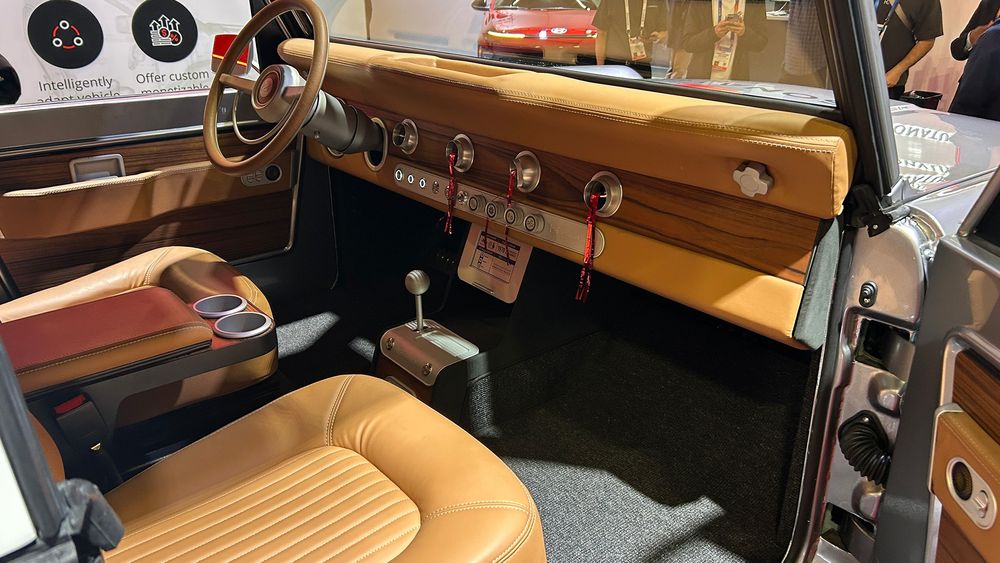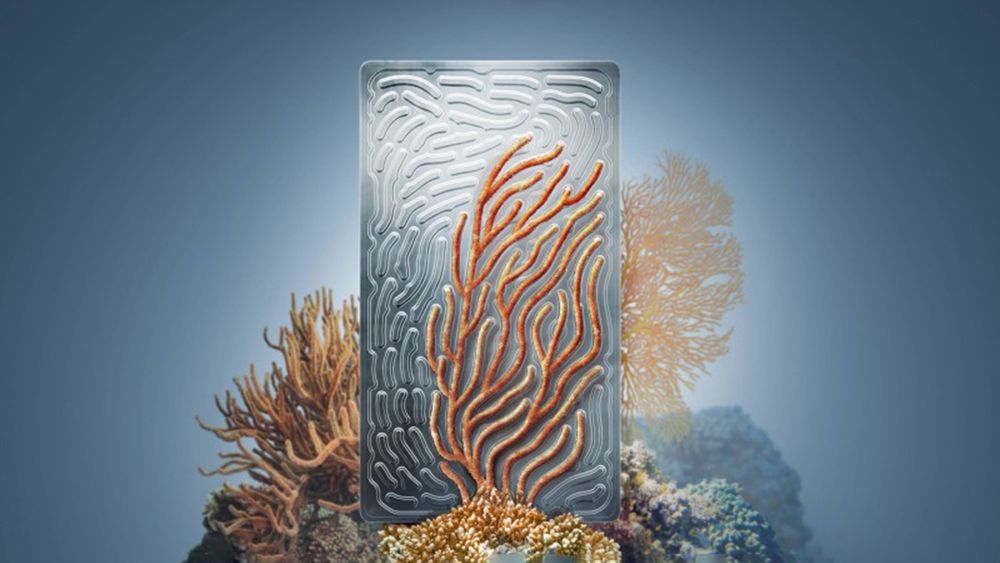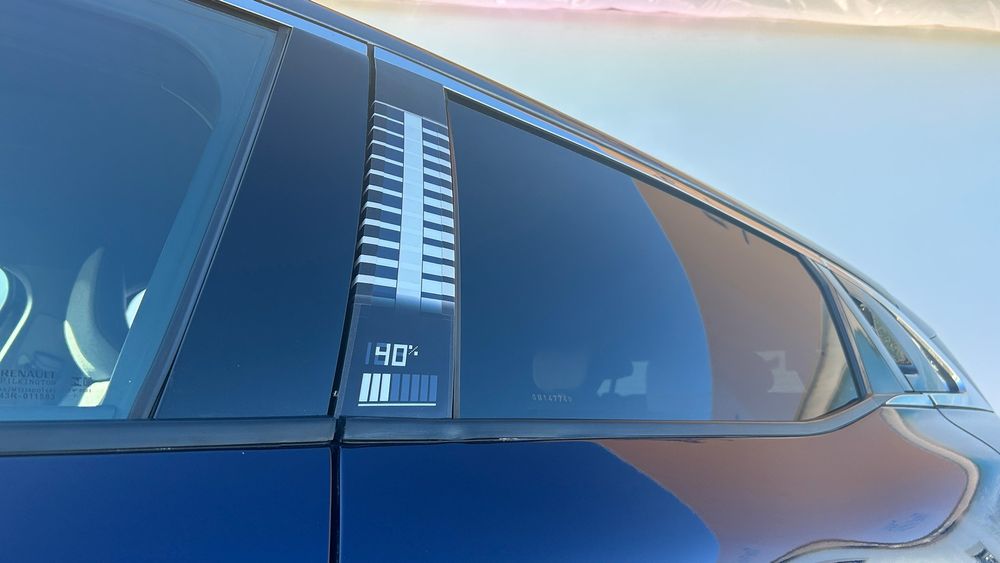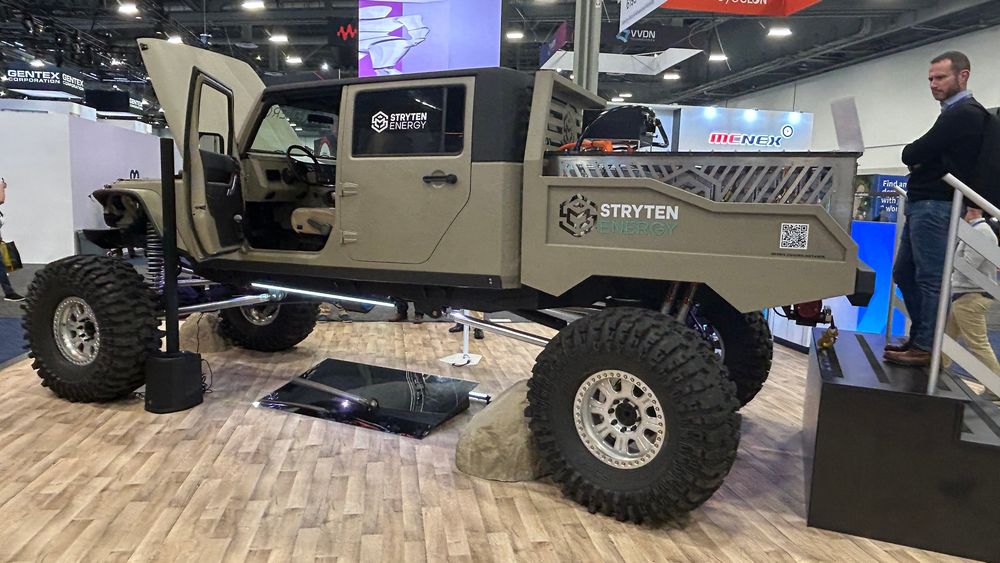The Future Is Now? These High-Tech Features Could Appear in Your Next Car
A software-defined ’70 Bronco, physiological car audio, bionic cooling, Kindle-tech in cars, morphing consoles, and a mobile power grid in a Jeep.
This always happens. After spending five days and a zillion steps at CES 2005, there are… leftovers. Cool things that just didn’t conform to any of the week’s other thematic story lines. Things like a software-defined’70 Bronco that shows us how your car might one day diagnose its own ailments. Or ear-aware car-audio. Or owl- and coral-inspired “bionic” cooling systems. Even a Jeep to provide power when disaster strikes. We'll bundle them as future-is-now-style developments that could, maybe, possibly show up in your next car (or the one after that). Enjoy.
A Software-Defined ’70 Bronco
Automotive software supplier Sonatus demo'd its wares on a Zero Labs-electrified Bronco, upfitting it with off-the-shelf ECUs capable of running its Automator AI toolkit. This system makes it trivially easy to program new features and beam them to the vehicle, which was demonstrated by adding functionality to the remote unlocking key fob.
The tech has passed ASIL-D safety standards, so it can also safely manage remote powertrain upgrades. While the Bronco reeled us in, it was Sonatus’ AI Technician offering that really clicked. Imagine noticing some problem like a rough engine idle condition and asking your car about it. Using Sonatus Collector AI, the car could gather pertinent sensor data, compare it against OEM service manual data. It could then give you a hypothesis of what’s wrong, share the severity of the problem, and maybe even schedule an appointment to fix it, with the dealer ordering the necessary parts in advance. Collector AI can also be pinged by OEM engineers to gather data on a particular system of interest, helping inform an over-the-air update or recall. Having an onboard service writer-bot interests me way more than AI bots that make coffee orders, recommend restaurants, or tell me the weather.
Ear Canal–Optimized Audio?
Last year we introduced you to the automotive audio tech collaborative Audio Foundry. This year Denon has joined this maker space and gave us a listen to the same Tesla Model Y that last year featured speakers in the carpet. Well, the audio up-sampling and master music manipulators at Dirac have teamed with Denon to develop the Denon PerL earbuds, which audio-sample the user’s ear canal to tailor spatial equalization of the music for a perfect fit. The Tesla now features 22 speakers and exciters, with the latter only deployed in the headrests and roof liner, and Tymphany woofers and other Denon speakers filling in from below. Even without having measured my eardrums, the sound quality and spatial placement of instruments and voices is remarkable. Denon and Dirac reckon that adding the physiological equalization of a driver’s personal ear shape could make the experience just that much more ideal. It’s still TBD whether multiple listener’s PerL profiles could be accommodated.
Bionic Cooling
Tier I supplier Mahle took inspiration from bird-of-prey wings and ocean corals when designing its latest heavy-duty cooling fan and hydraulic cooling plates. Owls are stealth predators, so contouring the fan blades like owl wings helps halve their noise while making them 10 percent more efficient.
Similarly, the company’s bionic battery-cooling plate channels water like a sea coral, not like the back-and-forth Disney-ride queue. As a result, cooling performance improves by 10 percent and pressure loss drops by 20 percent. Reducing the amount of material further lowers the part’s carbon footprint.
Pushing Our Buttons
AUO Morphing Center Console: This bonus feature of the transparent, flexible microLED screen technology broadly on display throughout Taiwan’s AUO booth is a center console underpinned by loads of little pins that can move up or down to change the contour of the console. They can also provide haptic feedback. So any button you can imagine depicting on a screen can become a 3D button you can push. Note that in this example, the button for P remains depressed, while R, N, and D visibly stand proud of the display. Press any of the buttons further down on the screen could launch a bunch of sub-menu buttons. Their three-dimensionality should reduce eyes-off-the-road time as well.
UltraSense Capacitive-Force Buttons: UltraSense started out making motionless phone-case buttons, and has only recently veered into automotive to offer this thin all-in-one LED and capacitive/piezo-electric switch solution that can provide hidden-until-lit functionality behind wood, carbon, leather-look, and other finishes including metal. The piezo strain element reduces the frustration factor of capacitive switches that too easily actuate when brushed accidentally. Commercial production is expected in 2027.
Continental Emotional Cockpit
Supplier Continental showed off two novel elements in its Emotional Cockpit: The flashiest is the Swarovski-crystal dual display elements. The upper transparent one features a MicroLED touchscreen, while the lower one uses LCD.
Perhaps even cooler is the E-Ink décor panel. Using technology like that powering your Kindle screen, the black or white pixels require no power to retain their state. So owners need never grow weary of the same old carbon-fiber, or wood-tone again.
Continental also showed E-Ink tech on an exterior B-pillar display, for indicating things like battery state of charge, ride-share client name, etc.
Stryten Reluctance
Alpharetta, Georgia based Stryten Energy LLC showed off a go-anywhere mobile power station mounted in a heavily modified 2015 Jeep JK Wrangler-turned-pickup. Its bed is filled with 90 kWh of batteries, and the 5.9-liter Cummins diesel gen-set under the hood can recharge said batteries from 20–80 percent in just 15 minutes. This allows the rig to provide power for extended periods, and means of recharging from solar or other means is also envisioned. The gigantic wheels and tires are driven an onboard 335-hp Cascadia motor mounted to the transfer case to uphold Jeep’s live-axle tradition.
I started critiquing cars at age 5 by bumming rides home from church in other parishioners’ new cars. At 16 I started running parts for an Oldsmobile dealership and got hooked on the car biz. Engineering seemed the best way to make a living in it, so with two mechanical engineering degrees I joined Chrysler to work on the Neon, LH cars, and 2nd-gen minivans. Then a friend mentioned an opening for a technical editor at another car magazine, and I did the car-biz equivalent of running off to join the circus. I loved that job too until the phone rang again with what turned out to be an even better opportunity with Motor Trend. It’s nearly impossible to imagine an even better job, but I still answer the phone…
Read More










